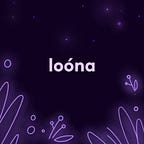Art therapy and sleep
Art therapy was officially recognised by Adrian Hill in 1942 for its applications to physical and mental health. As a war artist during the First World War, Hill has first-hand experience of how therapeutic the act of making art could be. It helped him to process the traumatic events that he had witnessed during the war, but it had also helped him in his recovery from tuberculosis.
Ever since, experts have been finding more and more applications for art therapy in clinical practice. It has been found to aid those suffering from traumatic brain injury, physical challenges and breast cancer. It has also been effective in reducing symptoms of mental health conditions such as schizophrenia and post-traumatic stress disorder.
Art therapy, with its ability to support emotional and mental health, has the potential to play a key role in preparing us for sleep. It could be particularly successful in addressing sleep problems associated with mental illness or specific traumatic experiences.
This article will explore the science behind art therapy, how it can be applied to sleep problems and how we at Loóna have incorporated it into our sleepscapes.
What is art therapy?
Art therapy is a way for people to work through complex and often troubling feelings or experiences by expressing their emotions through visual art media. The therapist works through the participant’s inner thoughts using materials like paint, paper, pens and clay.
This article refers to art therapy as the use of art-making as therapy. However, there are other types of art therapy including analytical art therapy and art psychotherapy, whereby the therapist verbally interprets the art created by the participant.
How does art therapy impact sleep?
Studies have indicated that art therapy improves emotional and mental wellbeing in a number of ways.
Firstly, it provides a medium for communication, allowing for the expression of emotions around a delicate or taboo topic. For example, art therapy has been used in palliative care to help those coming to the end of their lives create artistic mementos for their loved ones while processing their own thoughts around death.
Secondly, the process of making artwork has been found to boost self-esteem. As a result, it successfully helped children undergoing appearance-altering cancer treatment to cope with feelings around self-image and self-identity.
Thirdly, the creative environment and customisable medium allows people to express their unique personality without judgment. This has been particularly beneficial for teenagers who may feel self-conscious and are reluctant to verbalise their feelings or experiences to adults.
It’s difficult to quantify the effectiveness of art therapy and much more research is needed in this area. However, by outlining a few examples we can see a pattern emerge: art therapy helps us to process negative emotions in a relaxing, comfortable and pleasurable context. This becomes particularly apparent when we consider studies that specifically focus on the effectiveness of art therapy in treating mental illness.
In one study, participants suffering from a traumatic brain injury took part in 5 hour-long art therapy sessions. Their depression, anxiety and stress levels were assessed before and after the sessions. Most participants experienced decreased depression and decreased stress, while half experienced decreased anxiety.
In another study, participants suffering from acute stress disorder discussed their experiences with an art therapist while creating art. Through the process of making art participants were able to reconfigure their thoughts and emotions, leaving them with a greater sense of control over their trauma.
Finally, another study considered the impact of art therapy on the depression, anxiety, mood, trauma, distress, quality of life, ability to cope, self-esteem and cognition of participants suffering from non-psychotic mental health disorders.
The calming activity of making art has been found to reduce cortisol (stress) levels, improve mood and focus the mind on positive thoughts. We know how important stress management is for getting a good night’s sleep, which is why art therapy is a key component of our sleepscapes.
Loóna’s take on art therapy
Our sleepscapes guide users through a simple and immersive colouring activity. Along with ambient sounds and guided imagery, the colouring activity aims to gently activate creativity and concentration. The art itself is characterised by natural elements and warm colours to imbue a sense of safety and comfort.
By incorporating art therapy into Loóna’s sleepscapes, we are providing users with opportunities to engage in a form of therapy that is often underutilised by healthcare systems, particularly outside of city centres.
Sleep well!
